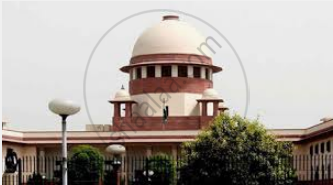Advertisements
Advertisements
प्रश्न
Match the contents of Column A with those of Column B:
| Column A | Column B |
| 1. Parliament | (a) village courts |
| 2. Supreme Court | (b) hears criminal cases |
| 3. A District Judge | (c) hears civil cases |
| 4. A Sessions Judge | (d) decides the number of judges in the Supreme Court. |
| 5. Nyaya Panchayat | (e) is the highest court of appeal in India. |
उत्तर
| Column A | Answers |
| 1. Parliament | (d) decides the number of judges in the Supreme Court. |
| 2. Supreme Court | (e) is the highest court of appeal in India. |
| 3. A District Judge | (c) hears civil cases |
| 4. A Sessions Judge | (b) hears criminal cases |
| 5. Nyaya Panchayat | (a) village courts |
APPEARS IN
संबंधित प्रश्न
Fill in the blank:
The Supreme Court of India is located in _______.
Choose the correct answer:
The High Court is the highest court of justice in a _________.
State whether the following is true or false:
A High Court is not a court of record.
Answer the following question in one or two words/ sentences:
Mention any two kinds of disputes that can be brought directly before the Supreme Court.
Answer the following question briefly:
The Supreme Court is the highest judicial body in the country. In this context, explain: Its original Jurisdiction
Answer the following question briefly:
With reference to the powers of the High Court, discuss its Original Jurisdiction
This is a picture of the apex Indian count.

What is the composition of this Supreme court?
Fill in the blanks:
The Supreme Court of India consists of a _____ and _____.
Fill in the blank:
The courts at the district level and below it are known as the _____.
Answer the following question:
Who appoints the judges? What are the qualifications of a Supreme Court judge?
